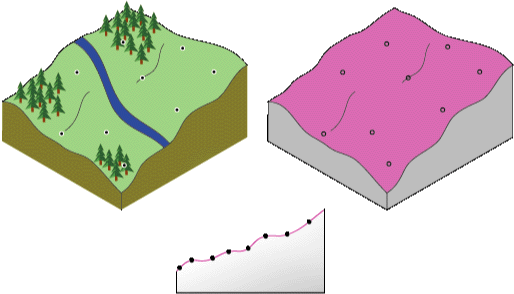Available with Geostatistical Analyst license.
Radial basis functions (RBF) enable you to create a surface that captures global trends and picks up local variation. They work especially well in cases in which fitting a plane to the sample values will not accurately represent the surface.
To create the surface, suppose you have the ability to bend and stretch the predicted surface so that it passes through all of the measured values. There are many ways you can predict the shape of the surface between the measured points. For example, you can force the surface to form nice curves (thin-plate spline), or you can control how tightly you pull on the edges of the surface (spline with tension). This is the conceptual framework for interpolators based on radial basis functions.
